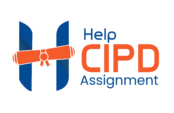5HRD Contemporary Developments in Human Resource Development
- September 18, 2021
- Posted by: admin
- Category: CIPD Level 5

CIPD Level 5’s Contemporary Developments in Human Resource Development is intended to develop and grow the careers of HR professionals in practice. This unit provides learners with the knowledge, insights, and skills they need to practice HR within and outside their workplaces. The course unit offers students the opportunity to learn and understand the effective use of models, knowledge, and processes in HRD. In HRD, the HR professionals are trained to implement HR practices effectively. Through this perspective, the unit will serve as a source of encouragement to learners, allowing them to assume responsibility for the essential aspects that contribute to HRD implementation and management. In completing this course, participants understand the actions, practices, knowledge, and models that can be used to promote sustainability at their workplace. Furthermore, this allows learners to discern their professional orientation in HR and what the future will hold for them.
The unit’s content
The unit of contemporary developments in HRD is responsible for developing new approaches to ensuring that HRD functions are effectively performed. In order to achieve this, it is essential to identify and explain the various debates that arise during the explanation of the meaning and use of HRD. In addition, the role of HRD in enhancing strategic organisational development is identified, as well as its benefits in promoting performance. Finally, a brief examination of the differences between strategic HRD and HRD strategy is presented, along with techniques for promoting HRD for HR professionals.
Besides the external trends and data aimed at promoting HRD practice, another learning concept for HRD learners consists of the external trends and data. Identifying the theories of national human resource development and methods and models of vocational education and training is necessary for this. They are essential because they allow employees to become more knowledgeable and more skilled through these opportunities. In order to distinguish between HRD and vocational training perspectives, which help measure the effectiveness of both in terms of promoting organisational success, they are differentiated. The learners are expected to utilise demographic data, labour markets, and population data to effectively organise and analyse the trends and data. They will help identify their effects on the promotion of HR planning in all organisational perspectives.
Furthermore, students will learn the models’ professionals use to manage HR development, leadership and implement HRD interventions to enhance employee learning and development. The contribution of HRD to an organisation depends upon how employees engage in learning. Therefore, organisational leaders should provide their employees with opportunities to develop knowledge of the various HR aspects that contribute to the sustainability of a business and the advancement of HR careers. Employee education programs can be formal or informal, and they are an essential element of the development of employees. CIPD requires that learners identify with continuous professional development by self-evaluating their HRD, and in CIPD, this is done through the self-evaluation tool. By doing so, the learners will be able to identify learning objectives and manage how to attain these objectives in order to enhance learning and growth effectively. Learning HRD helps the learners understand where their results come from and how they impact their roles and responsibilities, as well as helping them develop their HR careers.
In addition to learning the latest developments in HRD practice, students also examine the role of technology and its application in organisation-wide learning. Additionally, learners must understand that employers have to consider essential considerations when developing HRD for employees. They relate to the evaluation of cross-cultural employees and the role that HR has in ensuring that different employees’ learning needs are addressed to promote organisational success and development. Learning this unit will therefore enable learners to understand the connection between Human Resource Development and employee diversity.
Goals of learning
Upon completing the unit, learners should;
- Know what approaches to HRD development contribute to enhancing employees’ performance
- Recognise the external factors, trends, and data that influence HRD practice
- Develop an understanding of HRD’s role in professional development and organisational development
This course is appropriate for;
- HRM and HRD professionals who are interested in developing their careers
- Professionals working in human resources, such as HR management and development of the workplace employee.
- Those learners who would like to increase their knowledge, skills, expertise, and competence in developing professionals
- HR professionals who are capable of putting HR policies and strategies into action
- HR professionals who are familiar with the role HR plays in the workplace as well as other work environments
As part of the assessment for contemporary development in HRD, learners will be required to work in groups on a presentation document that includes the following information;
- The models of human resource development and their applications to leadership and professional development
- An analysis of HRD models with HRD interventions used in two different organisations, for two different groups of employees, within a cross-cultural context
- Utilising technologies to increase HRD efficiency and effectiveness
During the presentation of the document, learners will be expected to spend approximately 30 minutes, and a further 15 minutes for questions and answers will be allowed. The learners will also submit a supporting document of 1500 words, completed individually to demonstrate their contribution to the group discussion.
Wrap Up
A unit on contemporary developments in HRD offers learners knowledge on the models, practices, and approaches that will help them learn, develop, and grow in their HR careers. In order to identify with their personal development in learning, learners should use the continuous professional development approach, which involves developing SMART objectives. Goals should be specific; you should measure them, be relevant, and be time-specific. They contribute to the development of employees’ personal and professional skills as well as to the sustainability of the company, thus affecting the growth and success of the company as a whole.


